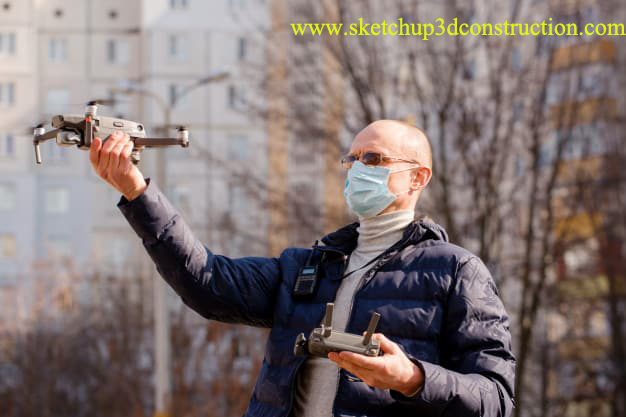Photogrammetry Surveying - Its Types, and Applications
- Concrete Cost Estimator
- Concrete Continuous Footing
- Landscape Bidding and Estimating
- Construction Cost Estimating
- Concrete and steel cost estimation
- Construction Cost Estimate Breakdown
- Construction Estimating Worksheet
- Home Construction Cost Estimate
- Estimate Pricing Sheet
- Sheet for General Contractor
- Construction Cost Estimate
- Labor Materials Cost Estimator
- Masonry Estimating Sheet
- Sheet for Building Contractor
- Construction Schedule Bar chart
- General Cost Estimator Sheet
- General Construction Estimate
- Building and Road Estimating Sheet
- Detailed expense estimates
- Door and Window Takeoff Sheet
- General Construction Cost Estimating Sheet

What is Photogrammetry Surveying?
Photogrammetry surveying means the measurement from photographs. It includes two words “photo,” and “meter.” More precisely, it’s a surveying technique in which arts, science, and technology are used for collecting, recording, and measuring physical objects and the environment from photographs.
There are two types of photogrammetry surveying:
- Terrestrial Photogrammetry Surveying
- Aerial Photogrammetry Surveying
In this civil engineering article, you will learn about the two types of photogrammetry surveying methods, their applications, benefits, and drawbacks.
Terrestrial Photogrammetry Surveying
The terrestrial photogrammetry technique involves the measurement of photographs taken from a fixed point on the ground level. In this method, photographs are taken by handheld camera or placing the camera on a tripod. This photogrammetry technique is useful for creating 3D models of the object but not used for topographical mapping.
Benefits and Drawbacks of Terrestrial Photogrammetry Surveying
Benefits
- Terrestrial photogrammetry provides high-resolution, high-precision, fast, and easy measurement as compared to other methods.
- The cost of measurement by this method is also low as compared to other measuring techniques.
- The setup is easily transportable. It’s best for small and close-range projects.
Drawbacks:
- Processing of data in this method is complex and requires special expertise. Due to lengthy and complex processing, it’s also time-consuming.
- The geometry (position and distance of camera) of the survey influence the precision, quality, and resolution of the photographs.
- It may be difficult to take photographs in some areas, high-traffic areas, etc.
Aerial Photogrammetry Surveying
It is a photogrammetry technique in which photographs or video recordings are taken from a higher elevation from the earth’s surface, like from a helicopter or aircraft. This method is useful for large transportation projects and military intelligence. It provides topographical and cultural features of the object.
Benefits and Drawbacks of Aerial Photogrammetry Surveying
Benefits:
- One of the major benefits of aerial photogrammetry surveying is it provides a real and permanent recording of a situation. So, there is no need to do fieldwork anymore; these recordings can be used for further measurements.
- Since it provides a wider view of the project, it’s easier to study and measure other lines as well. The broad view of the project field is better than any other traditional measuring technique.
- It’s convenient for areas that are not safe or difficult to measure. Again, there is no issue of disturbing the traffic for measurement as it takes photographs from the air.
Drawbacks:
- Bad weather and climate can affect aerial photogrammetry surveying. Wind, haze, the cloud can disturb while taking photographs which may result in poor quality images.
- Any objects such as trees, roofs, a canopy can block while taking the photographs. So, it cannot take clear pictures of the road, which will be a big problem during measurement.
For successful photogrammetry surveying, it’s essential to understand different components, proper planning, and execution of various processes. Hopefully, the above information has helped you understand photogrammetry, its types, benefits, and drawbacks.
- Application of concrete calculator
- Roofing Calculator can streamline the roof estimating process
- House construction cost calculator
- Engineering column design excel spreadsheet
- Material Estimating Sheet with Excel
- Materials List and Cost Estimate Worksheet
- Concrete Slab Estimating Calculator Sheet
- Common types of foundations for buildings
- Online calculation of construction materials
- Estimating with Excel for the Small Contractor
- Concrete Beam Design Spreadsheet
- Virtual Construction Management app for construction
- Autodesk’s Project Skyscraper
- Reed Construction’s Reed Insight
- Manage your construction project documentation
- Costimator, the popular cost estimating software
- On Center Software for construction professionals
- Free Construction Estimating Software
- Plumbing Calc Pro
- Cost Estimate Worksheet
- HVAC Piping Quantity Takeoff Worksheet
- Construction Estimating Software Sheet
- Estimate Cost Templates
- Construction Punch List
- Construction cost estimating template consisting estimating basic
- Gantt Chart Template for Excel
- Download Civil Engineering Spreadsheets with Verification
- The Building Advisor Estimating and Budgeting Worksheet
- Spreadsheet for design of concrete bridge
- Construction Estimating Software Free









